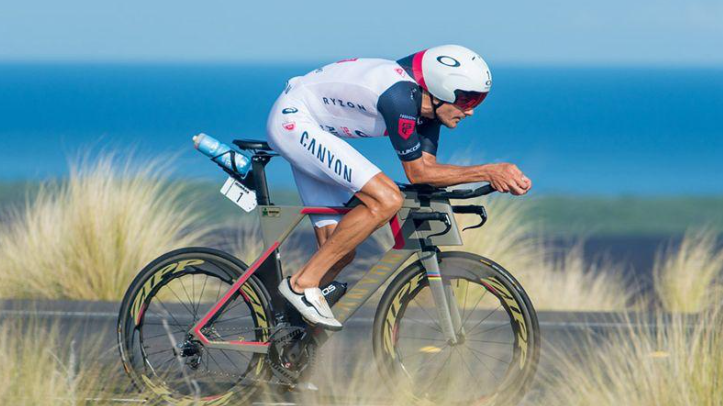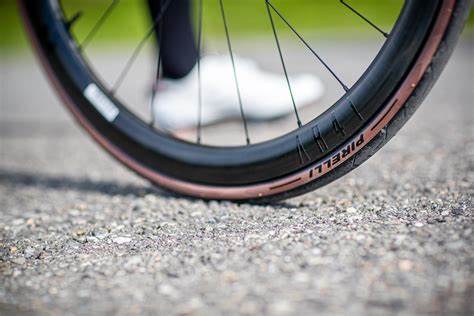When you swing your leg over your road bike, ready to embark on a smooth, high-speed ride, one crucial factor that can make or break your experience is road bike tire pressure. But how do you determine the optimal setting?
A Quick answer
Before the complicated discussion, if you are seeking a simple answer, you can directly use the median value of the tire pressure range suggested by the label on the outer tire. On this basis, you need to make the following minor adjustments:
(1) 5 PSI should be added if your journey today is all on asphalt or cement pavement.
(2) 5 PSI should be reduced if there is more gravel on the road.
(2) Reduce 5 PSI If the road surface is slippery.
(3) Increase 5 PSI if the rider is heavier and reduce 5 PSI if the rider is lighter.
(4) 3 PSI should be reduced if the weather is hot.
Always ensure that this calculated value is not higher than the maximum pressure the outer tire label recommends.
Actually, it’s a bit more complicate than that
Optimizing tire pressure on road bikes is one of the easiest and most cost-effective ways to improve bike performance and riding comfort. While most tires have the recommended pressure range printed on their sides, many novice cyclists need to know which pressure value to pump their tires. Here is the answer. The correct pressure of road bike tires depends on the driver, weather, and conditions. This may sound complicated, but calculating the proper range of pressure values is different. Whether you are a novice or a seasoned veteran, this article will help you whenever you want to optimize the performance of your road bike. In the following context, SUMLON will explain why tire pressure is essential, describe in detail what factors affect the best tire pressure value, and how to find the tire pressure that works best for you.
Higher road bike tire pressure leads to higher speed?
Usually, some label information is displayed on the outside of the tire. This information tells us the tire pressure range recommended by its producers. We know that higher tire pressure can give us higher speeds, but simply pumping up the road bike tire to the highest pressure it supports and expecting the best experience needs to be corrected. Instead, air pressure values that were too high were confirmed to slow down cycling speed. Higher tire pressure does make you feel like your road bike is faster, but once the tire pressure exceeds a threshold, pumping up the tire reduces grip and increases high-frequency vibration. These things happening will slow down your ride.

Optimize road bike tire pressure
It’s a balance between roll resistance and comfort.
Your tire pressure value needs to be high enough to minimize the force loss caused by the deformation. But sometimes, you need lower tire pressure so your bike can absorb the potholes on the road and improve your comfort level. However, if the tire pressure is too low, the tire may squeeze the rim and cause a flat tire or rim damage. Maintaining the correct tire pressure reduces the possibility of a flat tire. When your tire pressure is too low, tire – body deformation and friction between the tires and the road waste more force. Conversely, over-inflated tires make your bike vibrate over potholes. This not only diminishes riding comfort but also saps your energy. The correct tire pressure requires both making your bike faster and making your ride more comfortable.
The tools you need to adjust your road bike tire pressure
It would help if you used a pump with a barometer embedded inside to get the tire pressure to the set target. Some high-end tire pressure meters are worth buying if you want to fine-tune the tire pressure. Remember to choose a slightly lower tire pressure when you don’t have a barometer and no way to control your tire pressure. According to the test, once the tire pressure exceeds the optimal pressure value, the performance of the road bike will drop rapidly. Meanwhile, tire pressure that is too low only brings a relatively small speed loss, but it will be more comfortable on rough roads.

Reference benchmark value of the tire pressure
Some tire manufacturers provide air pressure recommendations for the road bike tires they sell. We can use these suggestions as reference data for tire pressure when a road bike with this tire rides on smooth asphalt in dry weather.
Fine-tune the base value according to the actual situation
(1) Overall weight, including bicycles, riders, and loads
Heavier riders or those carrying loads on a bike should use the higher tire pressure value within the range recommended on the tire label. For lighter drivers, the best tire pressure will be low. Finally, observe the pressure limits set by the wheel – group and tire manufacturers. Pay special attention to the upper limit. It is crucial not to exceed the upper-pressure limit marked on the side of the tire.
The heavier riders usually need the lighter rider to put more pressure on the bike, and your bike and any attached accessories’ weight are included. If riding an ultra-light road bike with no weight load, you may need to reduce the tire pressure value by a few psi. If you ride a station wagon or a road bike loaded with luggage, you may need to fill more air with your tires.
(2) Size of the wheel rim and tire (width)
In addition to the driver’s weight, the size (width) of the rim and tire significantly affects the optimal tire pressure value. Most new road tires have an inner width of 19mm. There will also be a wider inner rim on the market. When using a rim that is more comprehensive than 19mm inside, the best tire pressure value is lower than when you use the exact tire on a narrower rim.
(3) Weight distribution between the front and rear wheels is also crucial
When the road surface is moist, reduce the pressure on both tires by about five psi. Usually, the rear wheels will bear more weight than the front wheels. Historically, the pressure of the front tire should be desirable to be lower than that of the rear tire.
(4) Road conditions
Road conditions can impact the optimal air pressure value of the tire. If you ride on a very smooth track, the higher the pressure, the faster it will be. However, when riding on bumpy roads, high air pressure values will only increase the vibration and likely slow you down. As the potholes and bumps increase, the best tire pressure decreases further. When the road becomes bumpy, SUMLON does not recommend using tires below 25mm width, even if the tire pressure has been adjusted low enough. Reducing tire pressure improves comfort when riding on rough roads or heavily gravel roads. When the tire pressure drops very low but still can’t meet your requirements, you must replace a wider tire, such as a 25mm or 28mm width tire.
(5) Humidity
A slightly lower tire pressure may give you more grip when riding on wet roads. When the road surface is moist, the pressure on both tires should be reduced by about five psi. This helps to increase the contact area of the tire and the pavement, thereby increasing the grip.
(6) Temperature
Temperature can also affect the choice of optimal road bike tire pressure. The temperature of the road surface, the ambient temperature or the temperature of the friction in the forklift system during braking will increase the air pressure inside the tire. If you ride a bike with a ring brake on a hot summer day, be careful not to set too high tire pressure. The already higher tire pressure carries the risk of a flat tire at high temperatures.
(7) material and structure of the tire
The material and structure of the tire will also affect the optimal air pressure value. Road bicycle tire manufacturers’ materials and manufacturing processes can also affect the optimal air pressure value to a smaller extent. Road bike tires designed for race or summer use tend to be thin and soft. This makes it easier for them to deform under pressure, allowing for a smoother ride. Instead, winter road bike tires typically use harder, thicker, and more durable materials to improve their cycling range and puncture protection. With this in mind, when changing to winter tires, you need to lower some of the pressure values.
(8) The tubeless tire
The absence of an inner tire means you can ride safely at lower pressure. Because lower tire pressure improves off-road grip, a tubeless tire is particularly effective if you ride a bike with relatively wide tires and want light off-road or gravel rides.
All in all, SUMLON doesn’t simply tell you that your tire pressure should be 80 psi or 90 psi; we believe no one can tell you an exact number without knowing your situation. Instead, SUMLON hopes that you can find the best way to adjust your tire pressure and tire pressure after mastering the calculation logic of the optimal tire pressure. Finally, have a nice day; contact us if you are looking for a bike parts factory or a one-stop wholesaler. Peace.




